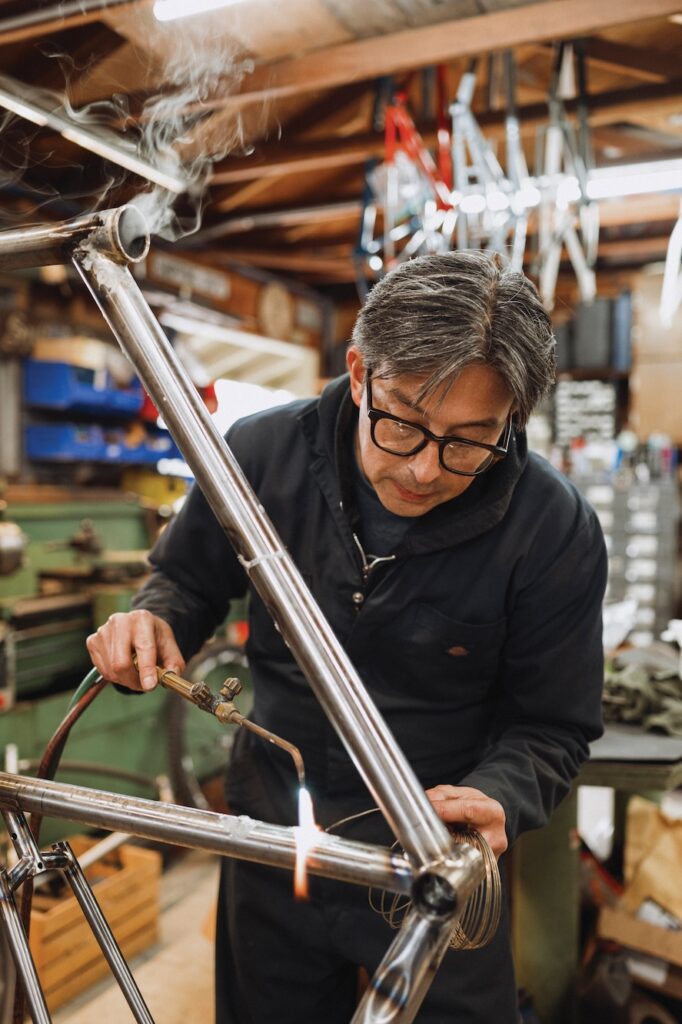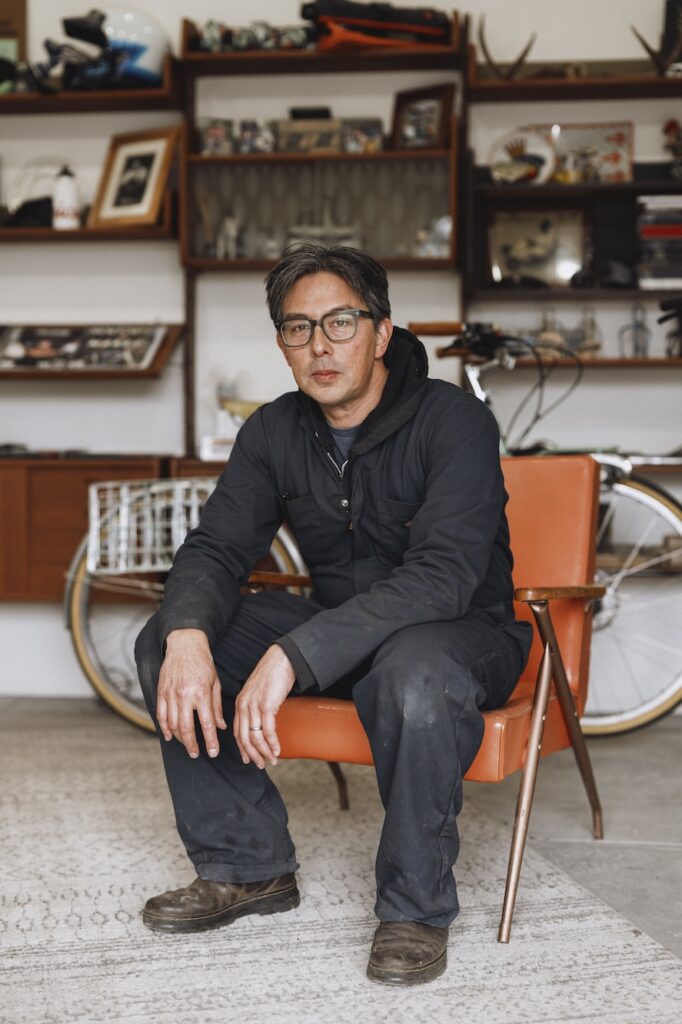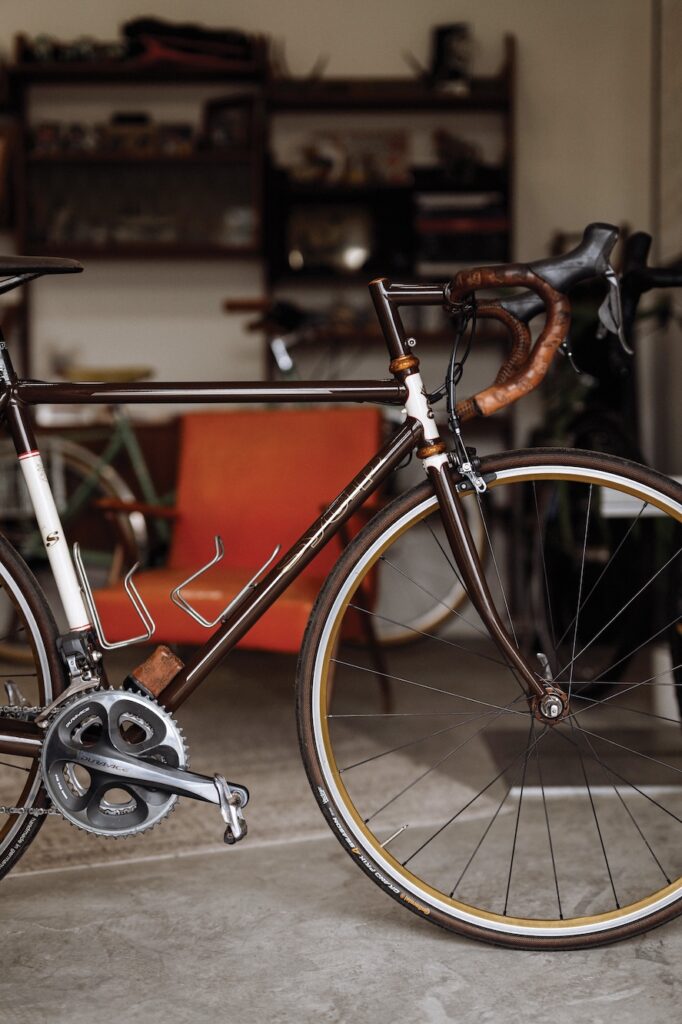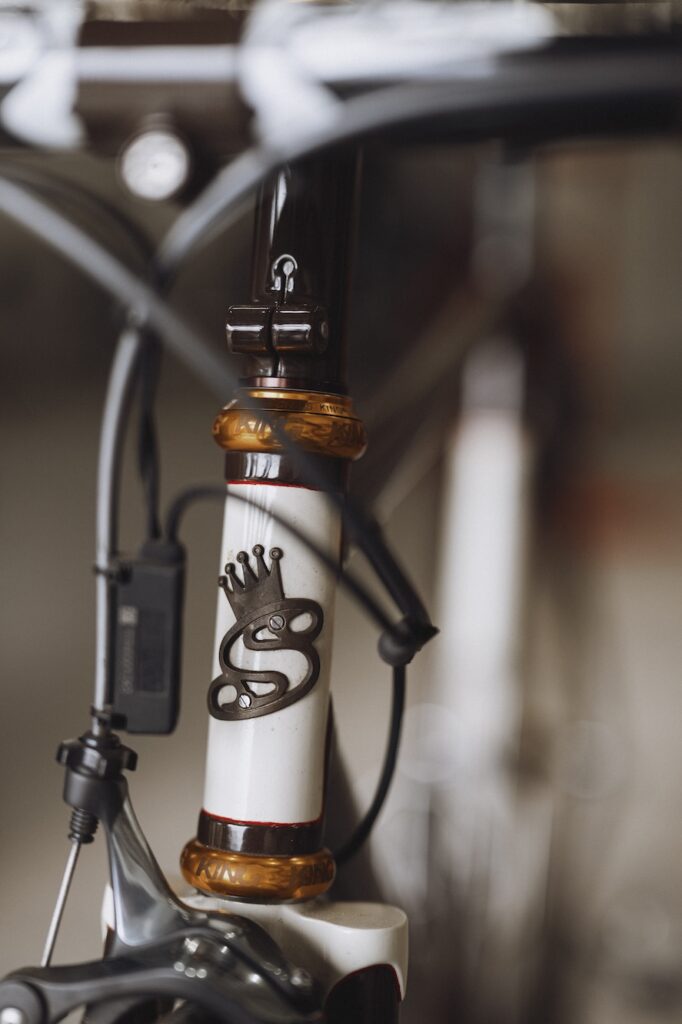The Napa Valley’s reputation for wine is so grandiose it can be difficult for locals producing anything else to get noticed. Grapes grown on the region’s precious terroir are some of the most prized in the world, so virtually every inch of land that can be turned into a vineyard tends to, in fact, get turned into a vineyard. But the same rolling hills and oak savannas that make Napa and Sonoma counties such a lovely place to knock back a glass of cab also lay out a rich network of rural roads and trails that beckon cyclists of all stripes—and a surprising cadre of makers catering to their custom whims.

Much of Northern California can lay claim to various pieces of cycling lore: nearby Marin is said to be the birthplace of modern mountain biking (there’s a Marin Museum of Biking that dives deep into the sport’s history), and legendary mass-market manufacturers like Salsa and Santa Cruz hail from here. But a small crop of custom builders of luxury, one-of-a-kind bikes lies tucked into wine country, quietly making a compelling case: a bike, built to a client’s exact dimensions, color and material preferences (steel, titanium, carbon fiber), complete with CAD drawings and exacting standards that illustrate exactly why many of the brands in the Valley frequently find themselves on “Most Beautiful Handmade Bikes” atop many editor lists. The deposit to join the cue alone generally costs as much as bikes by mass producers, and that’s even before the very customized build begins.

Fitzgerald got his start as an apprentice with Rock Lobster, a renowned builder of frames in Sonoma County, in 2003. His wife’s job in the Bay Area brought the couple to the region, but they were also lured by a thriving cycling scene. Fitzgerald often traverses the roads of what’s known as West County, from Willow Creek to King’s Ridge to Cazadero, where you can “start in the woods and end up in the ocean, really beautiful and different sceneries.
“Bigger companies are building for the mass market,” says John Fitzgerald, who has been making frames and the “forks” that hold the front wheel of bikes in Sonoma County for the past 15 years at Fitz Cyclez. “They don’t know exactly who’s going to be riding the bike, so, in general, they tend to be overbuilt.”

Jeremy Sycip moved to Santa Rosa for that culture in the early aughts. He’d been building bikes since 1991 after also working with Rock Lobster as an apprentice, starting his first shop in Fremont and moving to San Francisco, where he immersed himself in the cycling scene. The artist who was painting the bikes Sycip made was looking to sell his business, so Sycip bought it, moved, and became a one-man show.
“I just wanted to work with my hands, and got the bug,” he says. “The cycling community is really big up here.”

As such, once spring is in full swing—April, typically—there are monthly cycling rides that launch from Stanly Ranch, Auberge Resorts Collection, in Napa. There’s a Stanly Ranch cycling team, in fact, and the popularity of the sport and activity has woven itself into the fabric of the region, one that prioritizes wellness in all its forms—be it through cardio of any kind, like cycling, or practices like yoga, meditation, or massage.
What’s more, says Teranchi, the Valley caters to all types of skill sets, from those who simply want to go on a casual cruise to others who want to try the “intense elevation” on offer for a ride that tests their mettle.

It’s easy, then, to see why the region’s cycling prowess dates back to at least the ‘70s, according to Alec White, the scion of White Industries, a company founded by his dad Doug White out of a spare bedroom in his house in Inverness. The brand is currently based in Petaluma, has weathered four decades of ups and downs in the cycling world, and now sells hundreds of different hand-built components.
Custom bikes make sense for most riders, Alec White argues. “Maybe you’ve got a rider who’s really tall, or really short, and they’re struggling to find a standard-sized frame that’s going to fit them well. Maybe the crank arms need to be a certain length, and the large manufacturers aren’t catering to this small clientele,” he says. “As people get deeper into the cycling world, they start appreciating the different aspects more and more.”

Another regional player is Curtis Inglis, who was born and raised in Napa, leaving to join the Air Force after high school, where he learned welding. After getting out of the service, Inglis got into cycling in Chico, and came across his first Retrotec bicycle, a unique style of ride that combines the aesthetic and framing of a beach cruiser with the modern tubing and high-end components you’d find on other bikes. “I fell in love with it,” he recalls, getting to know the owner of the company at the time, who happened to need a welder. Inglis bought the business over and moved it to Napa, where “the bike riding is spectacular,” he says. “It was an easy fit to come back to the Valley.”
Inglis Cycles builds about 35 Retrotec bicycles each year, he says, mostly for customers outside the Valley and all over the world.

The pandemic brought another boom in cycling, according to Fitzgerald, which he says played out across the industry, but was particularly kind to custom builders, as riders prioritized outdoor activities and shifted their spending toward adventures. Custom cycles were well-poised to capture a big piece of the market. “You’re buying something you know the history of, and you’re part of the process,” he explains. “There’s a desire to have more meaning in the things you buy, more connection.”
Because he builds not just frames but also forks and bike racks, Fitzgerald only makes about two-dozen bikes a year. He sticks with steel, working with customers through every step of the process, from the CAD designs to the powder-coated or wet-painted color scheme.
Custom bikes allow riders to develop long-lasting relationships with the person who builds them, White argues. And it’s hard to imagine a better place to build those relationships than the Napa Valley, where “you can feel like you’re part of the brand,” he says, “that you’re supporting a community.”







